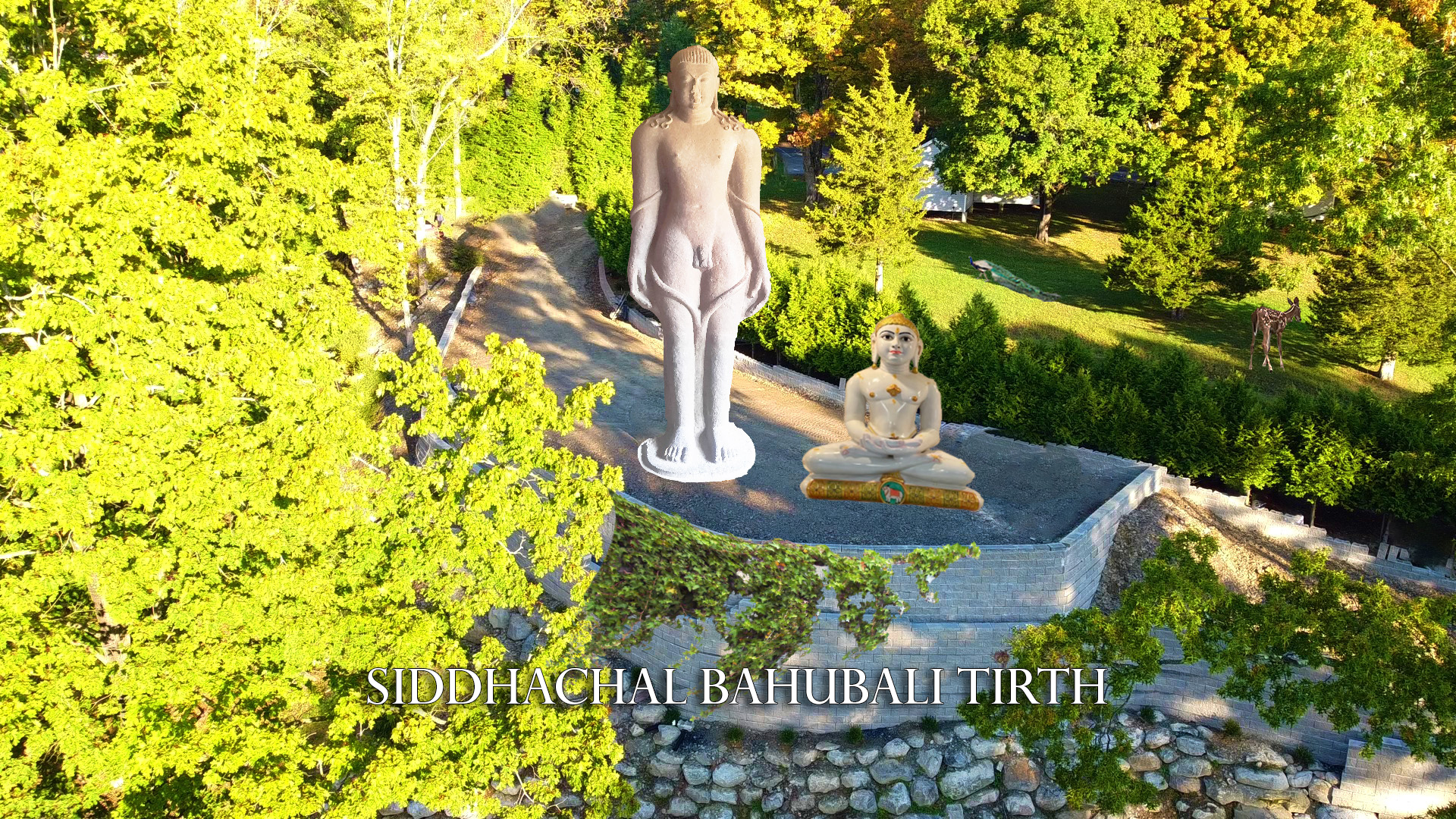Guruji Opens Doors
 While on his way to Rajagraha from Surabhpura, Bhagwaan Mahavira had to cross the river Ganga in a boat. Serpent prince Sudamstra bore a grudge against Bhagwaan Mahavira because in one of their previous births, the serpent price was a lion that was killed by Bhagwaan Mahavira. In order to have his revenge, the serpent prince created a terrible cyclonic storm by his magical powers. The boat was rocked by the huge waves that arose in the river. The mast of the broke and pandemonium prevailed everywhere. Amidst all this, Bhagwaan Mahavira remained seated calmly and serenely, absorbed in deep meditation. Two gods of nether regions, Kambala and Sambala, knew the background and by their divine powers, rushed to the spot. They drove away Sudamstra and the storm subsided. All aboard the boat bowed down to Bhagwaan Mahavira with great respect and gratitude because they were convinced they owed their lives to the presence of the great saint. Plate 31, Tirthankar Bhagawan Mahavira Illustrated, Munishri Yashovijayji Ma Sa. Copyright Jain Chitrakala Nidarshan Samiti 1974. Reproduced with permission.
While on his way to Rajagraha from Surabhpura, Bhagwaan Mahavira had to cross the river Ganga in a boat. Serpent prince Sudamstra bore a grudge against Bhagwaan Mahavira because in one of their previous births, the serpent price was a lion that was killed by Bhagwaan Mahavira. In order to have his revenge, the serpent prince created a terrible cyclonic storm by his magical powers. The boat was rocked by the huge waves that arose in the river. The mast of the broke and pandemonium prevailed everywhere. Amidst all this, Bhagwaan Mahavira remained seated calmly and serenely, absorbed in deep meditation. Two gods of nether regions, Kambala and Sambala, knew the background and by their divine powers, rushed to the spot. They drove away Sudamstra and the storm subsided. All aboard the boat bowed down to Bhagwaan Mahavira with great respect and gratitude because they were convinced they owed their lives to the presence of the great saint. Plate 31, Tirthankar Bhagawan Mahavira Illustrated, Munishri Yashovijayji Ma Sa. Copyright Jain Chitrakala Nidarshan Samiti 1974. Reproduced with permission.The following section is extracted from What’s So Special About Siddhachalam by Jaipat Singh Jain published in 2010.
Notwithstanding references in literature (such as above) of Bhagwaan Mahavira having crossed river Ganga by a boat, or of Jain mendicants and scholars having traveled to distant lands in the first millennium after Bhagwaan Mahavira, or of ancient Jain temples in those lands, mendicants’ travel by vehicles was forbidden in the Jain order. It was a time-honored tradition – Jain mendicants routinely walked thousands of miles. The tradition resulted in many auspicious consequences, including the greater opportunity for mendicants to reflect, and of lay people to meet with them in their local surroundings.
For his decisions, Guruji drew inspiration from great saints of the past such as Manidhari Shri Jinchandrasuriji Maharaj (Dada Guru) and Roop Chandji Maharaj. Guruji said that he often communicated with Dada Guru in the course of his meditations. In a video recording available at Siddhachalam, Guruji says that Dada Guru instructed him to travel outside India and spread the message of Bhagwaan Mahavira. Guruji, it seems, initially resisted the instructions. At that time, Guruji was an enormously respected monk, not just by Jains but by all, including successive prime ministers and presidents of India. Traveling by air outside the country would result in excommunication by some among the Jain community. Yet, for too long, the message of the Arihants had remained largely shut to the outside world. Also, the institution founded by Bhagwaan Mahavira comprised of monks, nuns, laymen and lay women. Yet, hundreds of thousands of Jains had migrated to foreign lands and there was no mendicant amidst them.
On June 17, 1975, at the height of his popularity, Guruji made the fateful decision to travel outside India by use of an aircraft. That solitary act is probably the most significant event in the history of Jainism in modern times. It opened doors to many monks and nuns using mechanical means of travel, including outside India.
During his travels, Guruji helped found many organizations and communities across the globe that engage in promoting ahimsa and anekantvad (the thinking that no one has monopoly over truth and that our notion of truth depends on standpoint). One of the principal organizations he founded in North America was the International Mahavira Jain Mission.


 Keshi said to Gautam: “Whom do you call foes?” Hearing these words of Keshi, Gautam replied: “O sage! The first foe is one’s unconquered soul. Add to this the four passions of anger, conceit, deceit and greed, and the five senses of touch, taste, smell, sight and hearing. Vanquishing all these ten, I move about righteously.” Kumar-shraman Keshi said: “Gautam, you are endowed with excellent wisdom. You have removed my doubt…” Uttaradhyayana Sutra, 23:3- 39. The conversation between Sharman Keshi, follower of Bhagwaan Parsvanath, and Gautam Swami, the ganadhara of Bhagwaan Mahavira.
Keshi said to Gautam: “Whom do you call foes?” Hearing these words of Keshi, Gautam replied: “O sage! The first foe is one’s unconquered soul. Add to this the four passions of anger, conceit, deceit and greed, and the five senses of touch, taste, smell, sight and hearing. Vanquishing all these ten, I move about righteously.” Kumar-shraman Keshi said: “Gautam, you are endowed with excellent wisdom. You have removed my doubt…” Uttaradhyayana Sutra, 23:3- 39. The conversation between Sharman Keshi, follower of Bhagwaan Parsvanath, and Gautam Swami, the ganadhara of Bhagwaan Mahavira.